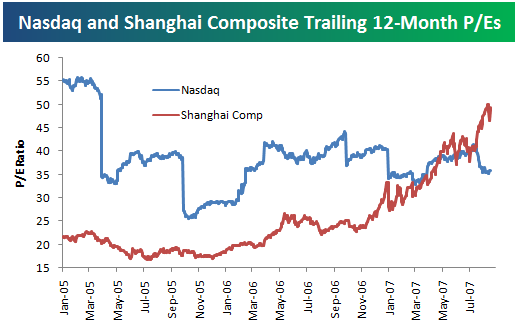Price Earnings Ratio How P
Post on: 26 Апрель, 2015 No Comment

Green stock market ticker board numbers/ Phtoographer’s choice/ Getty Images
If there is one number that people look at than more any other it is the Price to Earnings Ratio (P/E). The P/E is one of those numbers that investors throw around with great authority as if it told the whole story. Of course, it doesn’t tell the whole story (if it did, we wouldn’t need all the other numbers.)
The P/E looks at the relationship between the stock price and the company’s earnings. The P/E is the most popular metric of stock analysis, although it is far from the only one you should consider.
You calculate the P/E by taking the share price and dividing it by the company’s EPS.
P/E = Stock Price / EPS
For example, a company with a share price of $40 and an EPS of 8 would have a P/E of 5 ($40 / 8 = 5).
What does P/E tell you? The P/E gives you an idea of what the market is willing to pay for the company’s earnings. The higher the P/E the more the market is willing to pay for the company’s earnings. Some investors read a high P/E as an overpriced stock and that may be the case, however it can also indicate the market has high hopes for this stock’s future and has bid up the price.
Conversely, a low P/E may indicate a “vote of no confidence” by the market or it could mean this is a sleeper that the market has overlooked. Known as value stocks, many investors made their fortunes spotting these “diamonds in the rough” before the rest of the market discovered their true worth.
What is the “right” P/E? There is no correct answer to this question, because part of the answer depends on your willingness to pay for earnings. The more you are willing to pay, which means you believe the company has good long term prospects over and above its current position, the higher the “right” P/E is for that particular stock in your decision-making process. Another investor may not see the same value and think your “right” P/E is all wrong. The articles in this series:
- Earnings per Share – EPS
- Price to Earnings Ratio – P/E
- Projected Earning Growth – PEG
- Price to Sales – P/S
- Price to Book – P/B
- Dividend Payout Ratio
- Dividend Yield
- Book Value
- Return on Equity
Back to main article.














